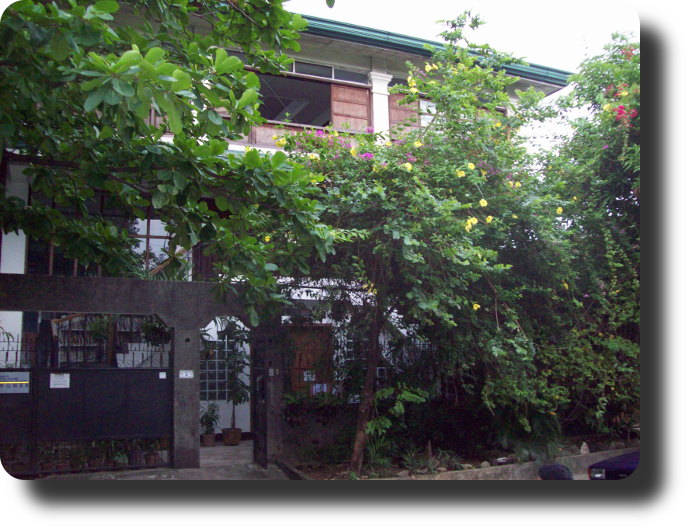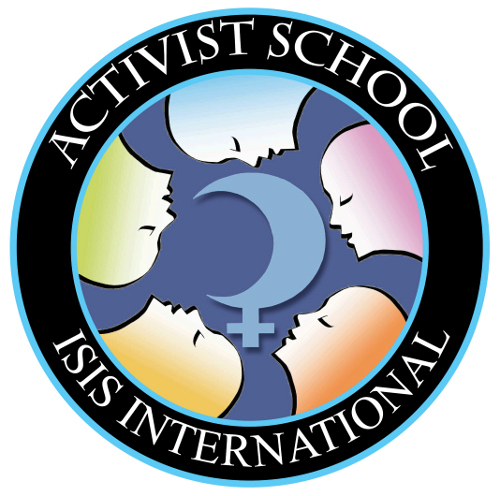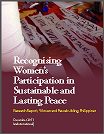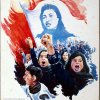Ma. Victoria Cabrera-Balleza
Manager, Media Information and Communications Services Programme
Isis International Manila
This email address is being protected from spambots. You need JavaScript enabled to view it.
Seven years after the issue of women and media was highlighted at the Fourth World Conference on Women in Beijing, China in 1995, which identified it as one of the critical areas of concern (along with poverty, education, health, violence against women, armed conflict, economic structures, power and decision-making, institutional mechanisms, women's human rights, environment, and the girl child), the media landscape has changed dramatically with the explosion in the information and communication technologies (ICT). Despite the fact that the impact of the development in ICTs is felt more in some countries than in others, it has already ushered in changes in the structure, ownership, control, and modes of distribution of media productions. However, as the cliché goes, the more things change, the more they remain the same-the coverage of women and women's perspectives in the media remain to be largely negative and stereotypical.
This continuing marginalisation of women in media strongly manifested itself in the second Global Media Monitoring Project (GMMP) organised by the World Association for Christian Communication (WACC) last February 1, 2000. Women in the world's media that day constituted just 18% of the total news make-up; men, a whopping 82%. A similar global media monitor in 1996 showed 17% of women as news subjects; 83%, men. This means that after a four-year period, women's visibility in the news only increased by 1%.
Meanwhile, many NGOs and women's organisations have always tried to reach out to the media. They see media as a key partner in popularising their advocacies and have tried to share their information with the media by sending out copies of their reports, researches, studies, and press releases to the media.
Despite these efforts, we still do not see much NGO activities, issues and perspectives written about or broadcast in the media. Why is this so? This is definitely NOT because media do not find NGO or civil society information newsworthy. It really has to do with how we package our information so that media will find them useful for their purpose. It is also about how we place our media releases, how we follow them up and how we network with media practitioners. In other words, it is about understanding how media operate and putting our media strategies in tune with the media's operating systems.
Years of experience have shown that forging alliances with media is not a one-shot deal but involves a long, arduous but nonetheless fruitful process. Always, there is the daunting task not just of making sure that media handles women's issues with the right perspective and sensitivity, but that they sustain their interest in women's advocacy. The challenge is for women's groups all across the world to come up with creative and innovative ways to engage media in cooperation.
It is with this realisation that Isis developed the concept of the Women's Media Team Project. The WMT concept was first tested at the Asia-Pacific Intergovernmental Meeting to Review the Implementation of the Beijing Platform for Action (BPFA) held in Bangkok, Thailand in October 1999. Inspired by positive feedback both from the participants and those who received the stories generated by the media team, this was replicated at the UN General Assembly Special Session to review the implementation of the Beijing Platform for Action (UNGASS) that took place in New York in June 2000 and then again at the World Conference against Racism, Racial Discrimination, Xenophobia and Related Intolerance in Durban, South Africa in September 2001.
Objectives
The WMT project employs a unique strategy of combining news coverage with actual training on developing and implementing a media campaign. The general objectives of the project are to:
1. influence the way by which mainstream media covers women and women's issues with the end view of promoting balanced and non-stereotyped portrayal of women in media; and
2. identify concrete strategies to increase women's access to and participation in media.
Specifically, the project aims to:
1. build up women's NGOs' capability in formulating and implementing a media and communication plan geared at mainstream media;
2. carry out an NGO Media and Communication Plan for a specific event that impacts on women;
3. generate media's interest and ensure media coverage of the issues surrounding a major event that impacts on women; and,
4. sustain the information and communication campaign for a major event that impacts on women.
The project entails the formation of a team composed of writer-trainees from women's NGOs across the world, editor-trainers from the mainstream media, a media liaison staff, an administrative staff and one project coordinator. The writer-trainees take part in an onsite training to formulate and implement a media and communication plan targeted towards regional and national mainstream media outlets. The training component of the project consist of a preparatory workshop, daily sharing and editing sessions with the editors-trainers serving as resource persons. Stories and news releases produced by the writer-trainees are disseminated to media outlets in the country or city where the conference is being held (e.g., Bangkok, Thailand; New York, U.S.A., and Durban, South Africa), the countries where the writer-trainees are from, and the key press agencies, with the aim of generating media interest and ensuring media coverage of the issues related to the Conference (e.g., Beijing + 5 Review-poverty, violence against women, armed conflict situation, media and ICT; or for the WCAR-gender and racism.)
The implementation of the project requires careful planning, strategising and effective partnerships with different networks and institutions. Isis International-Manila was able to garner the support and inputs of partners such as the Feminist International Radio Endeavour (FIRE), the WomenAction network, International Women's Tribune Centre, Isis Internacional-Santiago, Isis-WICCE, Media Watch-South Africa, United Nations Fund for Women (UNIFEM)-East and Southeast Asia Regional Office, UNIFEM -South Asia Regional Office, United Nations Development Programme (UNDP)- Latin America and the Caribbean; UNDP-Mongolia - United Nations Population Fund-Honduras, World Council of Churches, NCOS-Pilipinas (National centre for Cooperation in Development) Canadian International Development Agency - Southeast Asia Gender Equity Programme; Foundation for a Sustainable Society, Inc., NOVIB, and the British High Commission-Vanuatu.
Mechanics
There were three stages to the project implementation: Pre-, During and Post-Conference. Following are the key elements of work that were undertaken in the first two stages:
Pre-Conference
1. Face to face or electronic discussions with project partners;
2. Advertising the project and selecting the members of the team;
3. Conducting a training needs assessment mini-survey;
4. Preparing the writer-trainees with knowledge of the Conference to be covered;
5. Online training of writer-trainees through an electronic workspace;
6. Setting up of radio and media contacts and mailing list at national and sub-regional level;
7. Establishing links to the print media, radio and television stations in New York;
8. Preparation of the media kit; and
9. Preparatory face-to-face meeting and workshop for all team members just prior to event that will be covered.
During the Conference
1. Daily discussions/workshops on topics such as the nature of media, coverage of women, non-sexist writing, and reporting in mainstream media; -- In the last topic, the editors explain the need to develop the proper angle of the news story and cite examples on this. They stress that NGOs have a wealth of information and what they need to learn is how to package the information so that mainstream media will pick it up. In New York, the WMT members were also able to take part in a hands-on workshop on Internet broadcasting conducted by the Feminist International Radio Endeavour (FIRE). In this workshop, the participants learned about the rudiments of broadcasting in the Internet and the advantages that the technology offers to women.
Apart from the workshops, the WMT take part in a daily sharing of experiences in covering the different events at the Conference. In addition, each individual team member engage in one-on-one editing sessions with the editor assigned to them. The WMT is divided into two groups with each group working with one editor from the start and up to the conclusion of the Conference. This enable the editors to come up with a complete assessment of the team members' news coverage and writing skills and how this developed over the course of the training.
2. Production and dissemination of media-ready materials on a daily basis;
3. Dissemination of radio phone dispatches to home countries;
4. Setting up of radio and television guestings of key women's representatives;
5. Organising of Press Conference/s;
6. Tours to different media outlets; - During such tours, dialogues with other media practitioners who provide them with tips in covering women's issues and events are also held as part of this exposure. In New York, the team members met with Barbara Crossett, UN Bureau Chief of the New York Times, Rita Jensen of Women's E-news, and Anaga Dalal of Ms. Magazine. The meeting also became a networking opportunity to the members of the media team. The media practitioners they met encouraged them to send contributions from the team members not only for the duration of the Conference but even beyond.
7. Evaluation and Planning.
Post-Conference
1. National report back press conferences;
2. Radio and TV guestings;
3. Production of post-Conference stories;
4. Continued online training and exchange of stories amongst the tram members.
Results
For the three occasions that the project has been implemented, a total 135 stories for the print medium were produced in English, Spanish, Nepali, Bahasa Indonesia, Bahasa Malaysia, Mongolian, Bislama (the national language of Vanuatu), Kyrgyz, Russian, Chinese, Filipino, German and Croatian. For radio, a total of 33 interviews, features and guestings were made and for TV, four productions on the WCAR were completed and aired making a total of 172 productions.
These media productions were sent to 241 print, broadcast and electronic media outlets around the world using e-mail, fax, and radio-telephone patches.
The manner and frequency by which the stories and press releases produced by the media team were covered was monitored by the organisations from which the media team members came. Reports indicate that the stories have been picked by the media in Argentina, Nepal, the Philippines, Kyrgyztan, Indonesia, Sri Lanka, and Malaysia, and Australia.
A more significant achievement of the project is the development and implementation of media and communication strategies by the WMT members in their respective NGOs. In Kyrgyzstan for example, the Forum for Women decided to produce a regular radio programme after one of their members took part in the WMT project in New York. In Nepal, consultations and dialogue with the media were conducted by Sancharika Samuha, one of the organisations that took part in the WMT project.
Challenges
While it could be said that the three instances of project implementation were generally successful, there were a number of external and internal challenges met. Some of these were:
1. Lack of funding or delays in fund releases; - This prevented Isis International-Manila from implementing the project in full scale. Some of the constraints that resulted from the lack of funds were:
- the absence of representatives from other other subregions like North Africa, Eastern Europe and the Caribbean
- the ack of editor-trainers - the ideal trainer-trainee ratio would have been 1:2
2. Lack of preparedness and enthusiasm on the part of some of the trainees; - Despite the agreements made with the sending organisations regarding the demands and requirements of the training, at least two writer-trainees still came unprepared and exerted minimal efforts to deliver what was expected of them. It took a lot of energy on the part of the editors and project coordinator to try to maximize their potential during the period of the training.
3. The levels of bureaucracy encountered in applying for media accreditation with the UN Department of Public Information. - In the three occasions that the WMT project has been implemented, Isis experienced different levels or forms of bureaucracy in applying for media accreditation with the UN DPI. In Bangkok, all members of the media team were granted media accreditation and access to all media facilities right on the day that the Asia-Pacific Media Team registered. New York, on the other hand was a big lesson in negotiating with the UN and its agencies. The most significant learning is that a request for an action outside of the guidelines and policies of a UN agency (in this case the granting of media accreditation to members of the team who are not professional media persons--but doing legitimate media work just the same) should be presented as a win-win situation for both the NGOs and the UN-meaning it should be highlighted that the UN is also benefiting from the media team project. The WCAR experience in Durban, South Africa was a completely different story. The media team was denied media accreditation by the same agency despite the fact that an accreditation was already granted to the WMT in its first two implementation. The team was put in the same predicament as many other NGO-based media and communications organisations that were unable to get access to media facilities in Durban. After much negotiations, only four members of the media team were issued media passes and this was only after a UNIFEM official interceded with several phone calls two days after the Conference started. It must be noted that the passes issued to them were not for their membership in the WCAR Women's Media Team but as representatives of other news agencies that the UN DPI recognises. In addition, two members of the Women's Media Team faced disrespect and sheer rudeness when dealing with one of the staff of UNDPI, a matter that was duly reported to Ms. Susan Markham, an official of the UNDPI.
4. Most national dailies still preferred to use materials coming from established wire agencies. This may be attributed to the fact that international wire agencies already have long working relationship with these media outlets and in many ways have established their credibility as news sources.
Follow up activities
Isis International-Manila will attempt to replicate the WMT project in other major events such as the World Summit on Information Societies. This is to provide continuing training to women's NGOs in designing and implementing media and communication campaigns. In addition, this will also set the regularity of such undertaking and would help in establishing credibility with mainstream media.
Isis also intend to pursue negotiations and lobbying with UN DPI for it to recognise the efforts of small media organisations and alternative media initiatives to bring news and information to areas and sectors that giant media conglomerates are unable to reach. We feel that if the UN is serious about working in greater partnership with NGOs, there is a need to recognise the validity and relevance of information and communication channels that NGOs use to disseminate information outside of the mainstream.





 The
The 
 Isis Resource Center holds one of the largest feminist collections of materials in the Global South. With 40 years of publication experience, Isis holds a vast collection.
Isis Resource Center holds one of the largest feminist collections of materials in the Global South. With 40 years of publication experience, Isis holds a vast collection.